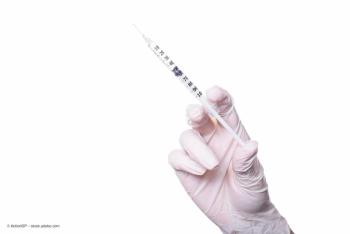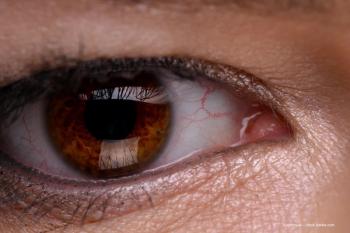
Case #1: A 62-Year-Old Patient With Uveitis
Dr. Thomas Albini MD reviews the case of a 62-year-old male with uveitis.
Thomas Albini, MD: Hi, everybody. I'm Dr. Thomas Albini. I'm a professor of ophthalmology at Bascom Palmer Eye Institute at the University of Miami. I'm going to be discussing today 2 cases of uveitis, and then we'll have some questions about these cases. If we can launch into case one.
This first case I wanted to share with you is a 62-year-old male with a history of posterior segment non-infectious uveitis in the left eye that was treated with Ozurdex in the past. The patient received injections; he's not exactly sure what they were. He's referred back because he got worse. When I saw him for the first time, he had been placed on 60 mg of prednisone and reported that things did get better on 60 mg of prednisone. But of course, we didn't want to leave him on such a high dose of prednisone. He had hazy media in the left eye, a fairly normal Fluorescein angiogram in the right eye, but some diffuse vascular leakage on the left eye. And the plan was to decrease his prednisone at that point, see how he does, and see him back in two weeks, and maybe initiate a long-term immunosuppression for this patient since he's had so many recurrences and been unable to really stay quiet with a reasonable dose of prednisone. We discussed the possibility of starting methotrexate. I usually tell patients it's going to be a 2-year treatment with methotrexate once they've established themselves as a recurrent uveitis patient. We talked about getting labs; I ordered a baseline CBC with liver function tests and had the patient come back in two weeks.
We made a diagnosis of intermediate uveitis in both eyes. I learned that he had a negative lab workup back in 2014. He continued to have persistent leakage on Fluorescein angiogram. His prednisone had been tapered down to 20 mg, and he's been on some degree of oral prednisone with diminishing and escalating doses over the prior year with Ozurdex in the past. And he's now got cystoid macular edema in the left eye. We started prednisone 15 mg per week and continued oral prednisone at 20 mg daily; we supplemented this therapy with an Ozurdex in the left eye due to the cystoid macular edema and also started diclofenac. We checked safety labs and had him come back in four weeks.
We see his fundus photos after the prednisone had been decreased. You can see the vitreous haze, and you can see Weiss ring also in the vitreous cavity there. He has an atypical qual retinal scar along the info temporal arcades. In the right eye, he also has a vitreous opacity fluorescein angiogram that really shows diffuse leakage; a lot of it is adjacent to the vessels, but it’s also around that area of chorioretinal scar. He also has leaky discs also bilaterally.
Three years later, he's continued on 20 mg of methotrexate and 5 mg of prednisone. In the interim, he's had 7 periocular injections that have been required to control the leakage and the cystoid macular edema. At that point, we recommended a 3-year fluocinolone sustained-release injection in both eyes. You can see here the cystoid macular edema in the left eye prior to injection. Six weeks after injection, his vision improves to 20/40, and you see a good response on the OCT, with complete resolution with cystoid macular edema.
Here, you see what's happened over the subsequent one and half years: He's continued without any cystoid macular edema, quiescent disease. He's been had a visual acuity of 20/30 20/40 with continued methotrexate treatment as well as the bilateral sustained-release fluocinolone implants.
Transcript Edited for Clarity
Newsletter
Keep your retina practice on the forefront—subscribe for expert analysis and emerging trends in retinal disease management.













































